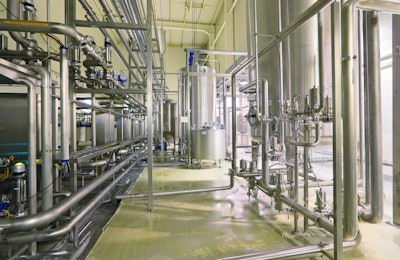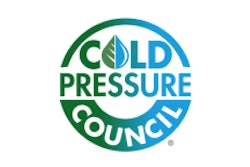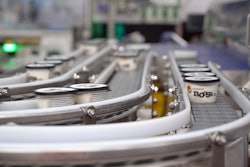Food and beverage processors rely on a steady stream of fresh water for a variety of purposes, including washing, sanitizing, steaming, and even peeling. A liquid filtration system will ensure that the water you use is safe, healthy, and free of contaminants, according to Commercial Filtration Supply’s Marketing Manager Mark Ligon. Here are five things that can help food and beverage processors better understand filtration.
1. Filtration can improve taste and extend shelf life
Quality is a primary concern in food and beverage processing. An effective water filtration system can help to improve taste and extend Shelf Life, according to Ligon. “Hard water, or water with unwanted sediment and impurities, can flatten carbonated beverages, discolor water, and even leave an unpleasant odor,” he states. Filtration eliminates these impurities, ensuring that beverages will be more refreshing, sauces will be smoother, and even pre-washed fruits and vegetables will have more flavor.
Water filtration can also help pre-washed fruits and veggies last longer. Submicron rated filters remove spoilage, microbes, and fungal spores from the water supply. This simple solution can extend the shelf life of a variety of foods and beverages without changing taste, color, or even the ingredients list.
2. Important factors to keep in mind when choosing a strainer or filter
Before beginning a water filtration system selection, it’s important to know what needs to be filtered out of the water supply, according to Ligon. Some things like sediment may be visible to the naked eye, but bacteria and microbes are harder to detect. “A processor may want to consider sending a water sample to a lab to learn more about what the water they are working with contains and what needs to be removed,” he says.
Once the water’s composition has been determined, the next step is deciding which filtration option is best for the application. Strainers remove larger suspended particles from liquids, which can often be seen by the naked eye. Filters remove much smaller particles, like bacteria and microbes.
Processing system design is another important factor to consider when selecting a filter or strainer, Ligon explains. Filters, for instance, may create a drop in pressure as water passes through, while strainers see less pressure fluctuation. System shut-downs can be a factor as well. “If the processing plant cannot manage frequent shutdowns for filter replacement, it may be best to consider self-cleaning filters or basket strainers, which allow the system to continue running during replacement,” he states.
3. Common types of filtration systems and strainers
When it comes to selecting the right filtration system, food and beverage processors have many options such as reverse osmosis systems, carbon block filters, and sediment filters.
Reverse osmosis (RO) systems use pressure to push water through a semipermeable membrane. The membrane acts as a very fine filter, blocking both large and small contaminants. RO systems are beneficial in applications where smaller contaminants like bacteria must be removed. They are frequently used to filter water used to process and wash fruits and vegetables.
Carbon block filters purify water without affecting the taste. “They are a great option for applications where water is a component of the finished product, as in beverages, broths, and sauces,” says Ligon. The carbon used in the filters successfully removes chlorine, chloramine, and some types of bacteria. “However, when used as the primary filter in the filtration system, clogging and pressure drops are likely to occur,” he adds. Because of this, carbon block filters are best used in conjunction with, and downstream from, a sediment pre-filter which will remove larger contaminants before they reach the carbon filter.
Sediment filters effectively remove larger, visible sediment and unwanted minerals, resulting in crystal clear water. While they successfully filter larger particles, they likely won’t stop smaller contaminants. Ligon says processors should consider sediment filters the first line of defense in the filtration system, working together with another filter, like an RO system or carbon block. “With the larger particles removed upstream, these other filters can more effectively remove smaller particles with less pressure fluctuation,” he explains.
4. Save on wastewater disposal costs with filtration
Wastewater management is an important focus of operating food and beverage production plants, where wastewater is plentiful. Applications including washing, blanching, sanitizing, and even dehydrating can create a continual stream of wastewater daily. State and federal regulations usually require high solids to be removed from wastewater, as well.
Many filtration systems on the market can assist with wastewater management, states Ligon. When filters consolidate collection of contaminants, regulatory fees and disposal costs can be saved. “Consider using self-cleaning filters for wastewater management,” Ligon says. “They can filter high solids, including fats, oils, and grease, into a separate chamber, allowing flow and pressure to remain consistent.”
5. Don’t neglect filter replacements
According to Ligon, regular filter replacement is extremely important, not just for a finished product but for the entire production system. This is because using water that is clean and free of sediment in processing machines is necessary to keep them running at peak performance. It can be hard, however, to know when to clean or replace filters.
“There is no definitive timeline on filter replacement, because each application is unique,” says Ligon. “Factors like filter style, workload, and system set-up all play a role in how often filters should be cleaned or replaced.”
However, he says there are some key signs to look for. For instance, if there’s a significant drop in pressure, it is likely that the filter is full and needs replacing. In addition, any noticeable changes to the quality of the water, including color, clarity, smell, or taste, would indicate the need for filter replacement. The appearance of sediment deposits or lime scale on equipment could also be a red flag.
Quality foods and beverages rely on quality water. With an effective filtration system in place, products will not only taste and look better, they are likely to last longer as well. Determine first what needs to be removed from the water supply and then select a filtration system that will work for each unique application.




















